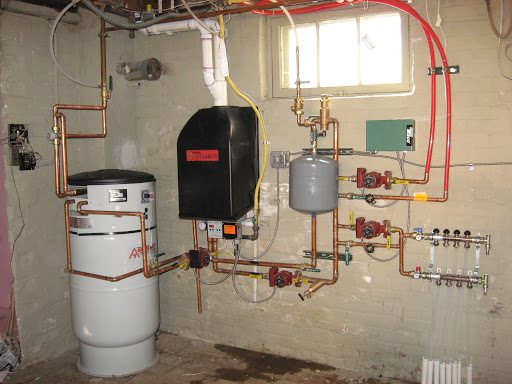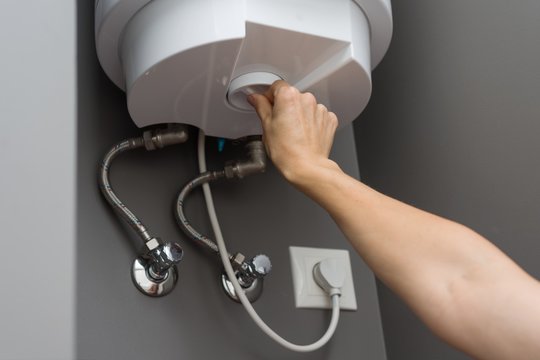Specialist Advice for Maintaining Your Home's Hot Water System
Specialist Advice for Maintaining Your Home's Hot Water System
Blog Article
Were you hunting for resources involving How to Maintain a Hot Water Heater in a Few Simple Steps?

Hot water is essential for day-to-day convenience, whether it's for a rejuvenating shower or washing dishes. To guarantee your warm water system runs successfully and lasts much longer, routine maintenance is essential. This short article provides practical ideas and understandings on how to maintain your home's warm water system to stay clear of interruptions and expensive repair work.
Introduction
Keeping your home's warm water system might seem daunting, however with a few simple actions, you can guarantee it operates smoothly for years to find. This guide covers everything from recognizing your warm water system to DIY maintenance pointers and understanding when to contact professional aid.
Value of Maintaining Your Warm Water System
Routine maintenance not just prolongs the lifespan of your hot water system but additionally ensures it operates successfully. Overlooking maintenance can bring about reduced efficiency, greater energy costs, and also premature failing of the system.
Indications Your Hot Water System Requirements Maintenance
Recognizing when your hot water system needs interest can prevent significant problems. Keep an eye out for indications such as inconsistent water temperature level, strange sounds from the heater, or corroded water.
Understanding Your Warm Water System
Before diving right into maintenance jobs, it's valuable to recognize the fundamental components of your hot water system. Typically, this includes the hot water heater itself, pipes, anode poles, and temperature controls.
Month-to-month Upkeep Tasks
Routine month-to-month checks can help capture minor problems before they intensify.
Purging the Water Heater
Purging your water heater gets rid of sediment accumulation, boosting effectiveness and lengthening its life.
Checking and Changing Anode Rods
Anode poles prevent corrosion inside the storage tank. Checking and changing them when worn out is essential.
Checking and Readjusting Temperature Setups
Readjusting the temperature level setups makes sure ideal efficiency and security.
Do It Yourself Tips for Upkeep
You can carry out numerous maintenance tasks on your own to maintain your hot water system in top problem.
Looking for Leaks
On a regular basis check pipes and links for leakages, as these can result in water damage and greater expenses.
Evaluating Stress Relief Valves
Testing the stress safety valve ensures it operates properly and avoids too much stress buildup.
Protecting Pipelines
Protecting warm water pipelines minimizes warm loss and can conserve energy.
When to Call an Expert
While DIY maintenance is useful, some problems need professional knowledge.
Complicated Issues Requiring Professional Help
Instances consist of major leaks, electrical problems, or if your hot water heater is continually underperforming.
Regular Expert Upkeep Perks
Professional upkeep can include complete inspections, tune-ups, and making certain conformity with security criteria.
Final thought
Normal maintenance of your home's warm water system is important for performance, longevity, and expense savings. By complying with these pointers and recognizing when to seek professional assistance, you can ensure a trusted supply of hot water without unexpected interruptions.
How to Maintain an Instant Hot Water Heater
Before tinkering with your hot water heater, make sure that it’s not powered on. You also have to turn off the main circuit breaker and shut off the main gas line to prevent accidents. Also turn off the water valves connected to your unit to prevent water from flowing into and out of the appliance. 2. When you’re done, you have to detach the purge valves’ caps. These look like the letter “T†and are situated on either side of the water valves. Doing so will release any pressure that has accumulated inside the valves while at the same time avoid hot water from shooting out and burning your skin. 3. When the purge valves’ caps are removed, you have to connect your hosing lines to the valves. Your unit should have come with three hoses but if it didn’t, you can purchase these things from any hardware or home repair shops. You can also get them from retail stores that sell water heating systems. Read the user’s manual and follow it to complete this task properly. When the hosing lines are connected, open the purge port’s valves. 4. You should never use harsh chemical cleaners or solutions when cleaning your unit. Make use of white vinegar instead. It should be undiluted and you’ll probably use about 2 gallons. 5. Now flush your water heater. This task should probably take about 40 minutes. We can’t give you specific directions for this because the procedure is carried out depending on the type, model and brand of your heater. With that being said, refer to the user’s manual. 6. When you’re done draining the unit, you have to turn off the purge port valves again. Remove the hosing lines that you earlier installed on each of the water valves. Put the valve caps (purge port) back in their respective places and be very careful so as not to damage the rubber discs that are found inside these caps. 7. Now that everything’s back in place, check your user’s manual again to find out how to reactivate your water heating system. 8. Once it is working, turn one of your hot water faucets on just to let air pass through the heater’s water supply pipes. Leave the tap on until water flows smoothly out of it. https://www.orrplumbing.com/blog/2014/september/how-to-maintain-an-instant-hot-water-heater/

I was guided to that article on Tips For Maintaining Your Hot Water Heater through a friend on our other blog. Loved our entry? Please share it. Help someone else find it. I recognize the value of reading our article about How to Maintain a Hot Water Heater in a Few Simple Steps.
Schedule Today! Report this page